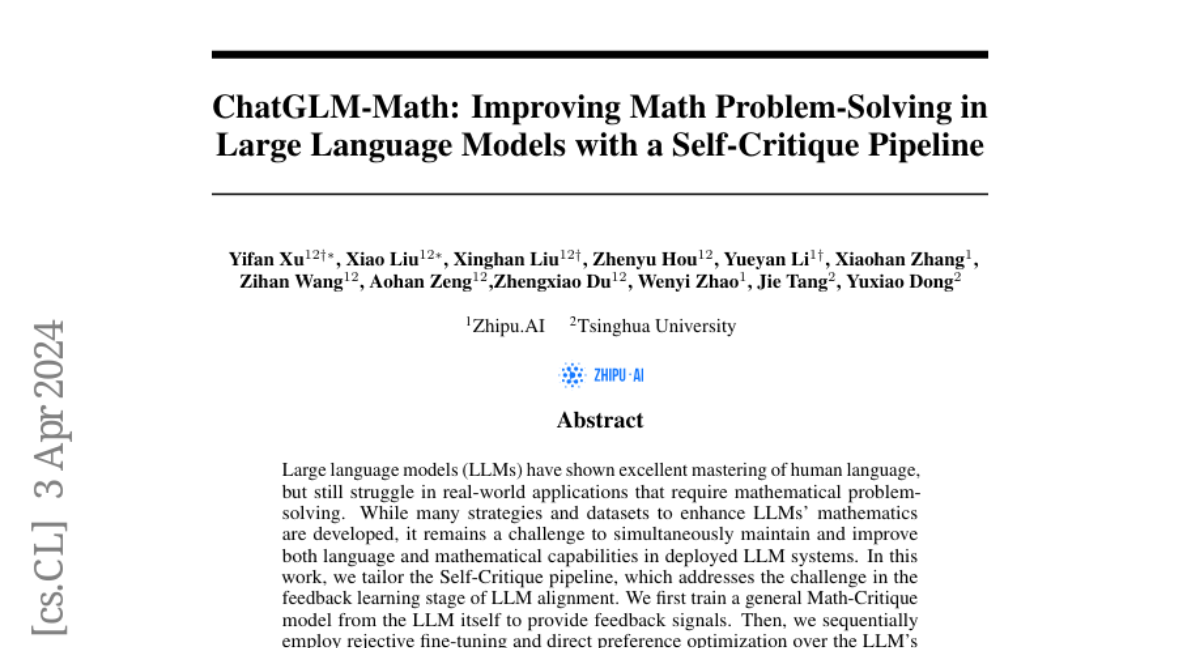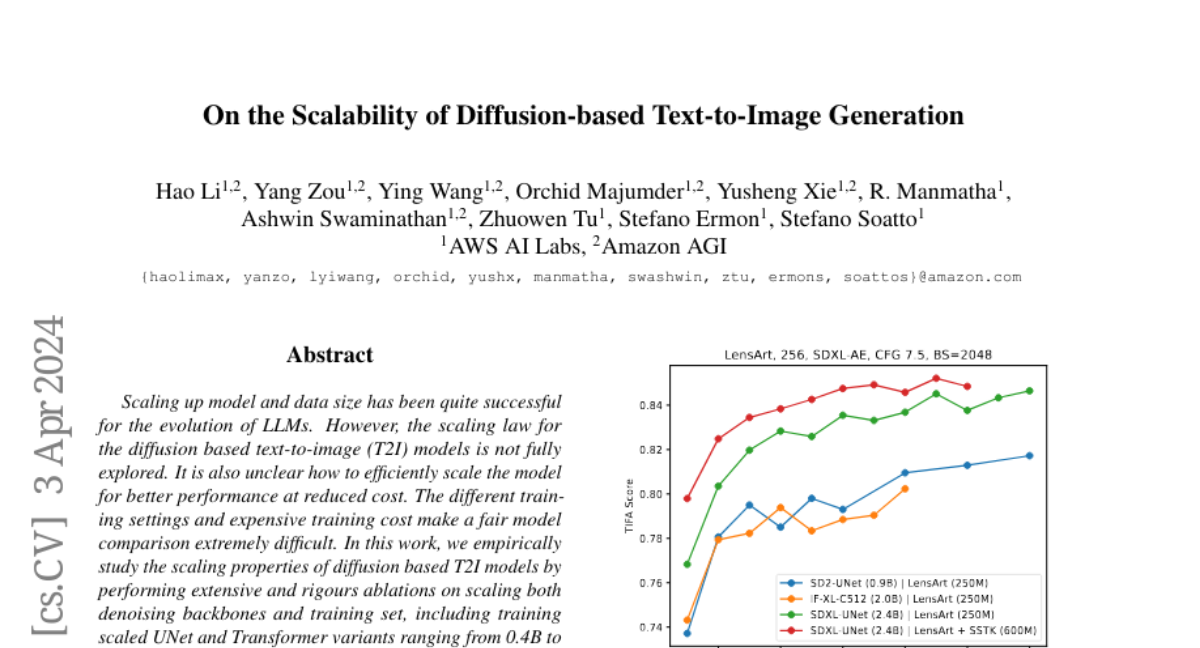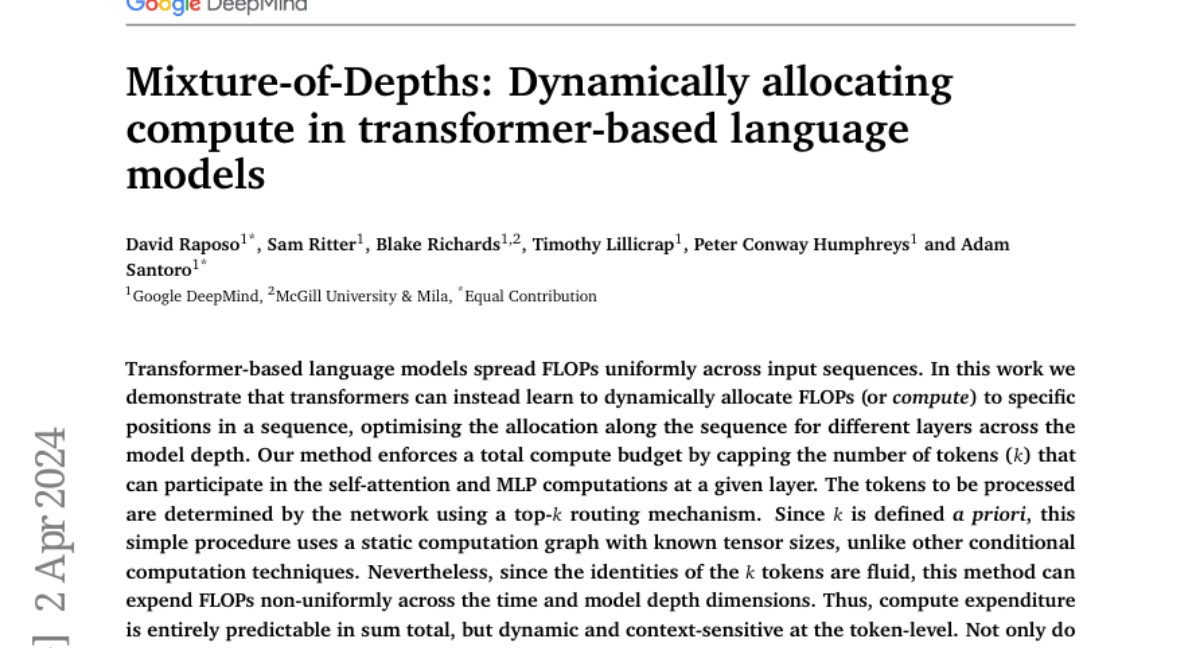Visual Autoregressive Modeling: Scalable Image Generation via Next-Scale Prediction

We present Visual AutoRegressive modeling (VAR), a new generation paradigm that redefines the autoregressive learning on images as coarse-to-fine "next-scale prediction" or "next-resolution prediction", diverging from the standard raster-scan "next-token prediction". This simple, intuitive methodology allows autoregressive (AR) transformers to learn visual distributions fast and generalize well: VAR, for the first time, makes AR models surpass diffusion transformers in image generation. On ImageNet 256x256 benchmark, VAR significantly improve AR baseline by improving Frechet inception distance (FID) from 18.65 to 1.80, inception score (IS) from 80.4 to 356.4, with around 20x faster inference speed. It is also empirically verified that VAR outperforms the Diffusion Transformer (DiT) in multiple dimensions including image quality, inference speed, data efficiency, and scalability. Scaling up VAR models exhibits clear power-law scaling laws similar to those observed in LLMs, with linear correlation coefficients near -0.998 as solid evidence. VAR further showcases zero-shot generalization ability in downstream tasks including image in-painting, out-painting, and editing. These results suggest VAR has initially emulated the two important properties of LLMs: Scaling Laws and zero-shot task generalization. We have released all models and codes to promote the exploration of AR/VAR models for visual generation and unified learning.
ChatGLM-Math: Improving Math Problem-Solving in Large Language Models with a Self-Critique Pipeline

Large language models (LLMs) have shown excellent mastering of human language, but still struggle in real-world applications that require mathematical problem-solving. While many strategies and datasets to enhance LLMs' mathematics are developed, it remains a challenge to simultaneously maintain and improve both language and mathematical capabilities in deployed LLM systems.In this work, we tailor the Self-Critique pipeline, which addresses the challenge in the feedback learning stage of LLM alignment. We first train a general Math-Critique model from the LLM itself to provide feedback signals. Then, we sequentially employ rejective fine-tuning and direct preference optimization over the LLM's own generations for data collection. Based on ChatGLM3-32B, we conduct a series of experiments on both academic and our newly created challenging dataset, MathUserEval. Results show that our pipeline significantly enhances the LLM's mathematical problem-solving while still improving its language ability, outperforming LLMs that could be two times larger. Related techniques have been deployed to ChatGLM\footnote{\url{https://chatglm.cn}}, an online serving LLM. Related evaluation dataset and scripts are released at \url{https://github.com/THUDM/ChatGLM-Math}.
On the Scalability of Diffusion-based Text-to-Image Generation

Scaling up model and data size has been quite successful for the evolution of LLMs. However, the scaling law for the diffusion based text-to-image (T2I) models is not fully explored. It is also unclear how to efficiently scale the model for better performance at reduced cost. The different training settings and expensive training cost make a fair model comparison extremely difficult. In this work, we empirically study the scaling properties of diffusion based T2I models by performing extensive and rigours ablations on scaling both denoising backbones and training set, including training scaled UNet and Transformer variants ranging from 0.4B to 4B parameters on datasets upto 600M images. For model scaling, we find the location and amount of cross attention distinguishes the performance of existing UNet designs. And increasing the transformer blocks is more parameter-efficient for improving text-image alignment than increasing channel numbers. We then identify an efficient UNet variant, which is 45% smaller and 28% faster than SDXL's UNet. On the data scaling side, we show the quality and diversity of the training set matters more than simply dataset size. Increasing caption density and diversity improves text-image alignment performance and the learning efficiency. Finally, we provide scaling functions to predict the text-image alignment performance as functions of the scale of model size, compute and dataset size.
Language Models as Compilers: Simulating Pseudocode Execution Improves Algorithmic Reasoning in Language Models

Algorithmic reasoning refers to the ability to understand the complex patterns behind the problem and decompose them into a sequence of reasoning steps towards the solution. Such nature of algorithmic reasoning makes it a challenge for large language models (LLMs), even though they have demonstrated promising performance in other reasoning tasks. Within this context, some recent studies use programming languages (e.g., Python) to express the necessary logic for solving a given instance/question (e.g., Program-of-Thought) as inspired by their strict and precise syntaxes. However, it is non-trivial to write an executable code that expresses the correct logic on the fly within a single inference call. Also, the code generated specifically for an instance cannot be reused for others, even if they are from the same task and might require identical logic to solve. This paper presents Think-and-Execute, a novel framework that decomposes the reasoning process of language models into two steps. (1) In Think, we discover a task-level logic that is shared across all instances for solving a given task and then express the logic with pseudocode; (2) In Execute, we further tailor the generated pseudocode to each instance and simulate the execution of the code. With extensive experiments on seven algorithmic reasoning tasks, we demonstrate the effectiveness of Think-and-Execute. Our approach better improves LMs' reasoning compared to several strong baselines performing instance-specific reasoning (e.g., CoT and PoT), suggesting the helpfulness of discovering task-level logic. Also, we show that compared to natural language, pseudocode can better guide the reasoning of LMs, even though they are trained to follow natural language instructions.
Mixture-of-Depths: Dynamically allocating compute in transformer-based language models

Transformer-based language models spread FLOPs uniformly across input sequences. In this work we demonstrate that transformers can instead learn to dynamically allocate FLOPs (or compute) to specific positions in a sequence, optimising the allocation along the sequence for different layers across the model depth. Our method enforces a total compute budget by capping the number of tokens ($k$) that can participate in the self-attention and MLP computations at a given layer. The tokens to be processed are determined by the network using a top-$k$ routing mechanism. Since $k$ is defined a priori, this simple procedure uses a static computation graph with known tensor sizes, unlike other conditional computation techniques. Nevertheless, since the identities of the $k$ tokens are fluid, this method can expend FLOPs non-uniformly across the time and model depth dimensions. Thus, compute expenditure is entirely predictable in sum total, but dynamic and context-sensitive at the token-level. Not only do models trained in this way learn to dynamically allocate compute, they do so efficiently. These models match baseline performance for equivalent FLOPS and wall-clock times to train, but require a fraction of the FLOPs per forward pass, and can be upwards of 50\% faster to step during post-training sampling.
Cross-Attention Makes Inference Cumbersome in Text-to-Image Diffusion Models

This study explores the role of cross-attention during inference in text-conditional diffusion models. We find that cross-attention outputs converge to a fixed point after few inference steps. Accordingly, the time point of convergence naturally divides the entire inference process into two stages: an initial semantics-planning stage, during which, the model relies on cross-attention to plan text-oriented visual semantics, and a subsequent fidelity-improving stage, during which the model tries to generate images from previously planned semantics. Surprisingly, ignoring text conditions in the fidelity-improving stage not only reduces computation complexity, but also maintains model performance. This yields a simple and training-free method called TGATE for efficient generation, which caches the cross-attention output once it converges and keeps it fixed during the remaining inference steps. Our empirical study on the MS-COCO validation set confirms its effectiveness. The source code of TGATE is available at https://github.com/HaozheLiu-ST/T-GATE.
InstantStyle: Free Lunch towards Style-Preserving in Text-to-Image Generation

Tuning-free diffusion-based models have demonstrated significant potential in the realm of image personalization and customization. However, despite this notable progress, current models continue to grapple with several complex challenges in producing style-consistent image generation. Firstly, the concept of style is inherently underdetermined, encompassing a multitude of elements such as color, material, atmosphere, design, and structure, among others. Secondly, inversion-based methods are prone to style degradation, often resulting in the loss of fine-grained details. Lastly, adapter-based approaches frequently require meticulous weight tuning for each reference image to achieve a balance between style intensity and text controllability. In this paper, we commence by examining several compelling yet frequently overlooked observations. We then proceed to introduce InstantStyle, a framework designed to address these issues through the implementation of two key strategies: 1) A straightforward mechanism that decouples style and content from reference images within the feature space, predicated on the assumption that features within the same space can be either added to or subtracted from one another. 2) The injection of reference image features exclusively into style-specific blocks, thereby preventing style leaks and eschewing the need for cumbersome weight tuning, which often characterizes more parameter-heavy designs.Our work demonstrates superior visual stylization outcomes, striking an optimal balance between the intensity of style and the controllability of textual elements. Our codes will be available at https://github.com/InstantStyle/InstantStyle.